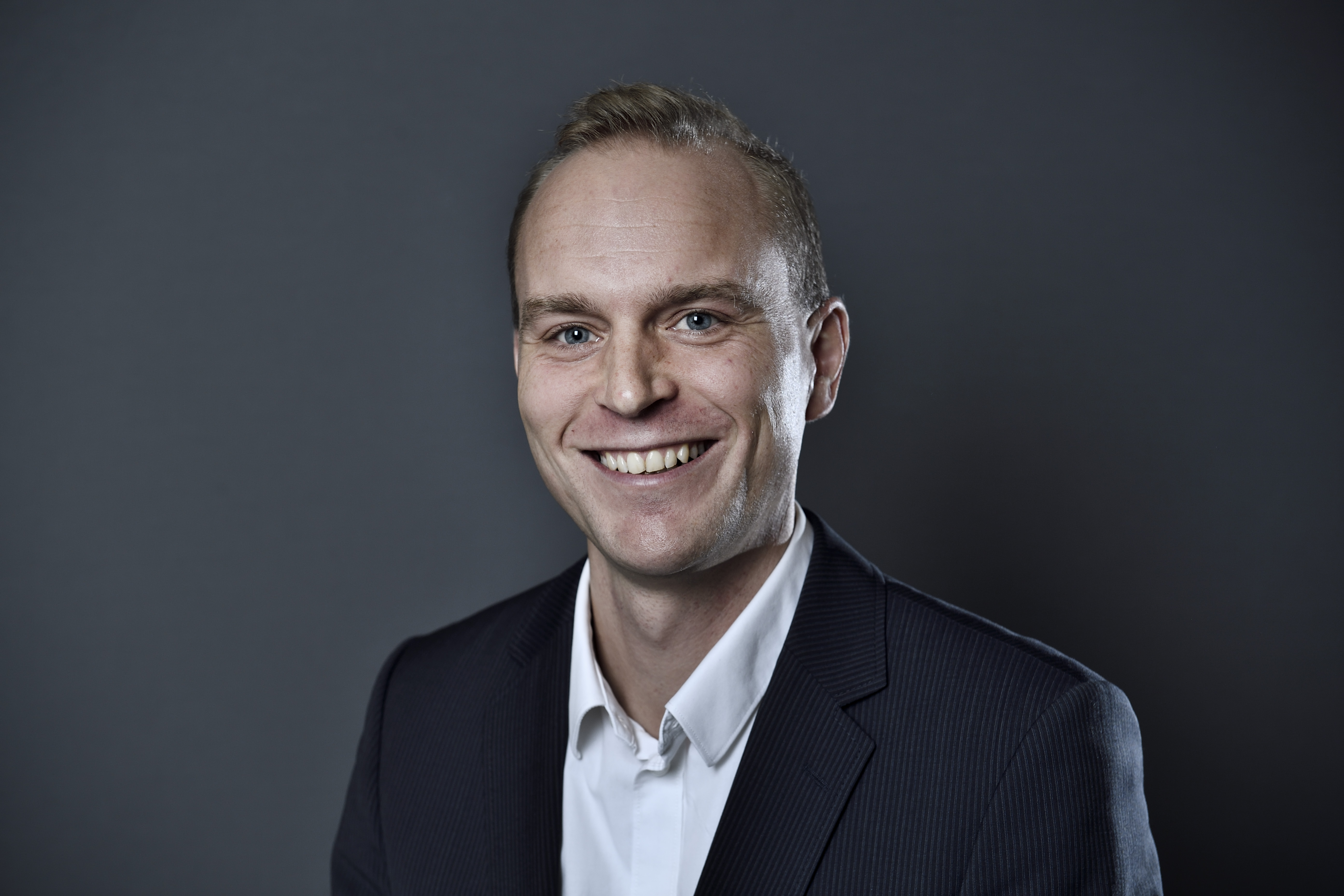Johan Rønby Pedersen
Research leader

Project title
Numerical Methods for Interfacial Flows (InterFlow)
What is your project about?
Grab a half-filled water bottle and shake it violently. What you will observe is a water surface that moves in a wild and complicated manner. My research project is about rethinking the computer algorithms used to simulate this kind of fluid flows. This I will do by applying advanced computer geometry and so-called mimetic methods where mathematical symmetries and structures are conserved in the translation of the governing flow equations to numerical methods. The goal is to develop the next generation of fast and accurate simulation tools for interfacial flows. This will pave the way for digitalization of a large number of engineering design processes where appropriate interplay with an interfacial flow is crucial for the functionality of a product or a structure.
How did you become interested in your particular field of research?
After a PhD in theoretical fluid dynamics at DTU, I was a research scientist for 6 years at the company DHI where I used simulation tools to calculate wave loads on offshore and coastal structures. I experienced how the existing codes had some fundamental problems in their representation and propagation of the wave shape. Thanks to a Sapere Aude Research Talent grant, I developed a numerical method that solved a number of the problems associated with wave simulations. The method was released as open source and was taken up in a lot of other areas of application. This broadened out my research to include the more general numerical challenge of simulating interfacial flows on computers.
What are the scientific challenges and perspectives in your project?
There are several challenges associated with interfacial flow numerics. First, there is a sudden jump in the fluid properties across the interface. For an air-water interface for instance the mass density jumps by a factor of 830 across the interface. Traditional numerical methods do not "like" this because they were designed to describe continuously varying fields. Second, the interface often develops extremely detailed structures, which it requires a very high resolution to capture, just like fine details in a digital image requires many pixels. When the number of “pixels” in a simulation increases, the calculation time also increases – often to a degree where it becomes practically useless. If we succeed in solving these problems what we will have is a powerful tool, which can both be used in application-oriented research and fundamental science within fluid dynamics.
What is your estimate of the impact, which your project may have to society in the long term?
Virtual prototyping with our new simulation tool can contribute to cheaper and better foundations for offshore wind turbines, to more energy efficient ship hulls and to more optimal fire sprinklers and astma sprays. Simulating wave breaking can contribute to a better understanding of the exchange of CO2 between the ocean and the atmosphere. Simulation of bubble dynamics can lead to more efficient chemical processing plants. The numerical methods developed in this project will be released as open source in a code called OpenFOAM, which is used by thousands of engineers and scientists worldwide. This will ensure fast and large impact and will foster new international collaborations. My research group will focus on contributing to applications advancing the green transition and mitigating the effects of climate change.
Which impact do you expect the Sapere Aude programme will have on your career as a researcher?
To start my own research group is nothing less than a dream coming true for me. My goal is to build a world-leading group within my research field, and this is now within reach thanks to the grant. With financing secured for the next 4 years, it will be possible to focus on the daring and long-term research ideas. The grant also enables a new collaboration with one of the leading groups in interfacial flow numerics at Sorbonne University in Paris, which I am looking very much forward to. Finally, I also look very much forward to inviting researchers and students to Denmark during the two workshops and the summer school that are part of the project.
Background and personal life
I love to read even though I am a slow reader. It feels like reading somehow completes me as a human being. Right now, I am reading “Lykke-Per”, whose enthusiasm for flow calculations and hydraulic engineering I completely share. When I need to relax, I play guitar, piano and sing, bonfire-style. The stress demons I keep away with running and Winther bathing. I like to debate politics - especially with people with whom I disagree and where we succeed in actually listening to each other. The backbone of my life consists of my wonderful wife, Herdis, and our two lovely and crazy kids, Carl and Vilfred, of age 8 and 5.
View all research leaders here
Research institution
Aalborg University, The Faculty of Engineering and Science, Department of Mathematical Sciences
Research field
Fluid Dynamics
City of your current residence
Copenhagen
High school
Gladsaxe Gymnasium
